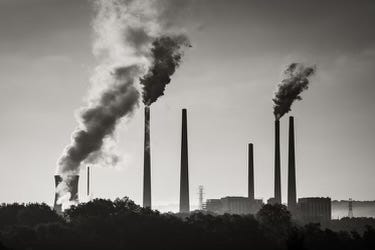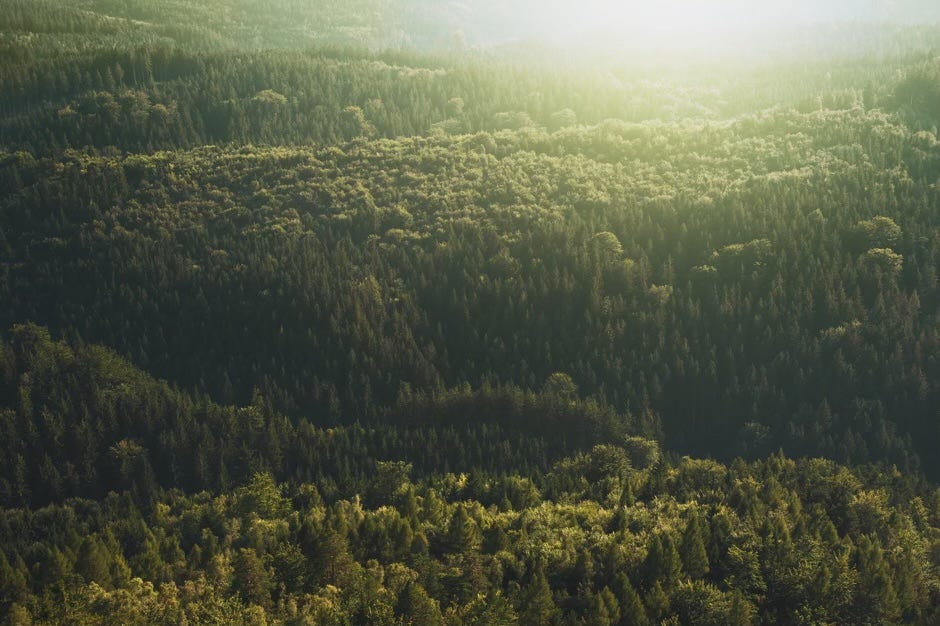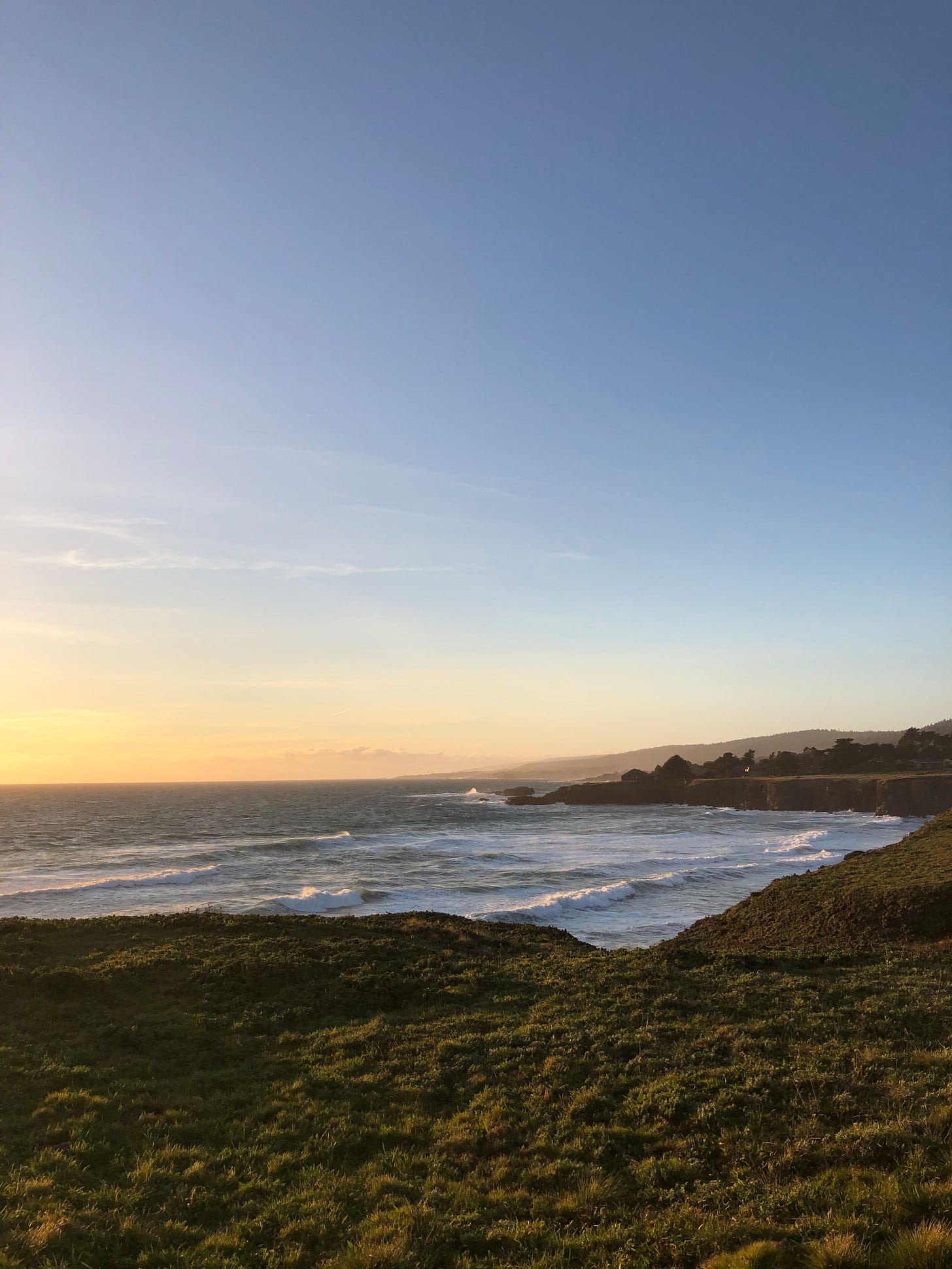frequently asked climate change questions (FACCQs)
Climate change is EVERYWHERE these days, from the news, to advertising campaigns, to that vegan on Instagram, to that uncle who “just doesn’t think it’s a big deal.” Yet it wasn’t until I was an environmental science major in college that I learned exactly how climate change works and just how big of a deal it really is.
I think it’s imperative as residents of this planet that we understand precisely what effect we are having on our planet, and subsequently on ourselves. So I present to you a list of Frequently Asked Climate Change Questions (FACCQs) and their trustworthy, well-researched, easy-to-digest answers.
I hope this leaves you feeling knowledgeable, enlightened, and ready to defend yourself against any climate skeptics you come across.
What is climate change?
Climate change is a term that refers to shifts in the Earth’s temperature and weather patterns. While it can refer to natural shifts in the Earth’s climate, it is almost exclusively synonymous human-driven changes caused by fossil-fuel burning and agriculture.
This is similar to global warming, but the two terms are not interchangeable. Global warming refers specifically to the heating of the planet as caused human activities. However, most scientists in my field have adopted the term climate crisis, emphasizing its urgency.
How does climate change work?
There are a suite of interacting factors that contribute to climate change, but the most significant one is arguably the production of greenhouse gases.
The atmosphere surrounding our planet is made up of many different gases. Light from the sun is able to penetrate the atmosphere and warm the Earth, but as light (UV) energy changes to heat (infrared) energy, some of it is trapped by the gaseous layer. This is what allows our planet to stay warm and habitable, hence the term “greenhouse gases.” The main greenhouse gases we discuss are carbon dioxide (CO2), methane (CH4), and nitrous oxide (N2O).
Even a small increase in the concentration of greenhouse gases causes Earth to warm, and unfortunately, humans have been emitting greenhouse gases into the atmosphere since the Industrial Revolution. The main culprit is CO2, which is produced primarily by burning fossil fuels for energy, transportation, and industry.
CO2 is naturally removed from the atmosphere by plants (photosynthesis, anyone?), but so much of it is being produced that plants can’t keep up. Additionally, the clearing of forests and wetlands for agriculture reduces plants’ productivity, exacerbating the cycle.
Methane is also increasingly concerning as a greenhouse gas. While it doesn’t remain in the atmosphere as long as CO2, it is more efficient at trapping heat, rendering it a more potent greenhouse gas. It’s produced primarily by agriculture, burning natural gas, and landfill waste emissions.
Warmer temperatures as a result of greenhouse gas emissions affect our planet in a multitude of ways. Melting glaciers and thermal expansion cause sea level rise, increased evaporation leads to severe drought, and the complex relationship between warmer air, warmer oceans, and precipitation results in more severe storms.
What evidence do we have of climate change?
There is overwhelming evidence of climate change. This website by NASA is a great resource, but I’ll give you the SparkNotes version here too.
The most significant evidence of climate change is the increase in temperature. A study by Marcott et al. (2013) reconstructed global temperatures dating back 11,000 years and determined recent warming is unprecedented and extremely rapid. Of course there is natural variation in global temperature (we all watched Ice Age), but data show an uncharacteristically sharp spike in temperature starting around the time of the Industrial Revolution.
There is also considerable ocean warming and loss of sea ice. Multiple sources corroborate the fact that the top 700 meters of the ocean has warmed considerably since the 1950s. Meanwhile, Arctic sea ice extent continues to decline drastically each year, an effect that has important consequences on the people and wildlife there.
Aside from peer-reviewed scientific analysis, most of us now have some kind of personal experience with climate change, from unusual weather patterns, greater fire frequency, uncharacteristic hurricanes, or simply, hotter summers each year.
How do we know it’s caused by human activity?
Just to get this out of the way at the beginning: climate change is absolutely, unequivocally caused by humans.
Of course there are natural fluctuations in the climate – scientists are well aware of these and use them as an important baseline for climate data. But the current increase in CO2, temperature, and extreme weather events on such a short timeline is unprecedented.
The amount of carbon produced by humans is well-documented. We have economic data going back centuries that account for all of the mining, burning, and transporting of fossil fuels. The amount of CO2 added to the atmosphere since the Industrial Revolution almost exactly matches the amount of CO2 produced by humans.
Additionally, CO2 in the atmosphere has a recognizable atomic signature. Every element has an atomic weight, for example, carbon is 12. This is the number we learned on the periodic table in high school chemistry. However, not all carbon atoms have a weight of 12. Carbon-12, carbon-13, and carbon-14 are all different isotopes (atoms with a different number of neutrons) that come from different sources. We are able to test the isotopic fingerprint of atmospheric CO2 and compare it to that of fossil fuels. Fossil fuels contain a specific ratio of the three isotopes that matches current atmospheric CO2, indicating that we have indeed been dumping large amounts of carbon into the atmosphere. This article explains isotopic signatures in greater detail.
And referring back to the global temperature reconstruction by Marcott et al. (2013), there is a clear increase in temperature starting at the time of the Industrial Revolution and continuing exponentially up to the present. At no other point in time have we found the Earth’s temperature to increase so much so quickly.
It’s a hard truth, but we are the culprits of climate change.
How big of a deal is it?
Really big.
Climate change affects every part of our planet and our society. The planet has already warmed by almost 2°Fand is expected to warm another 1°F in the next few decades. Although these numbers seem small, the balance of the planet is delicate and even miniscule changes can have far-reaching effects. Jeff Goldblum was onto something in Jurassic Park.
The EPA sums up the worst of the climate change impacts: higher temperatures lead to more heat waves and drought, warmer air and water cause more extreme weather events like hurricanes and fires, worsening air and water quality spread disease and pests, and changing ecosystems exclude or kill important species.
Together, these effects will result in massive destruction of ecosystems and human habitats, a decline in agricultural productivity, and a lot of death.
Much of the world as we have known it has changed, and there is more change to come.
Why should I care?
Sometimes the facts of climate change are still not enough to convince people to care. Sometimes it’s too frightening to allow yourself to care.
I believe that the fate of our planet, our natural resources, our neighboring plants and animals, our fellow humans deserve our care. I believe having compassion for other people and other species is a critical part of our humanity.
But if that still doesn’t spark the fervor of climate activism in you, consider the fact that you are directly affected.
If you live in a region where fire or hurricanes or tornadoes or drought are concerns, you are affected. If you’ve been touched in any way by COVID-19 (climate change and patterns of land use are expected to increase the amount of novel infectious diseases), you are affected. If you consume food grown by big agriculture, or drink municipal water, you are affected.
Climate change does affect some groups more than others. Indigenous people, communities of color, impoverished communities, laborers and workers, people with underlying health conditions, and people that live in countries with fewer economic resources are all disproportionately at risk.
But ultimately, everyone on Earth will be directly affected by climate change one way or another. And for that, I think it’s worth it to care.
What can we do?
Whew finally! That was a lot of science and history and frightening statistics. But we have reached the part of the FACCQs where we discuss how to take action.
I firmly believe, and there is a growing consensus in my field, that the individual is not responsible for global climate change. We live in a society, controlled by a government, run by industry that determines our collective greenhouse gas contribution. We don’t need our cars to be powered by fossil fuels or our materials to be made of plastic, but they are, and it is often difficult or expensive to find alternatives.
I am of the opinion that the most effective climate action is community organization. Whether that’s joining an organization like the Sunrise Movement, encouraging your local politicians to make ecologically-friendly decisions, or volunteering with your community garden to provide food and green spaces to your neighborhood. I believe community is incredibly powerful.
Research environmental non-profits near you and sign up to volunteer. Boycott brands that cause environmental harm. Call your congressperson. Protest. Demonstrate to those in power that we demand climate action.
And while I believe that group effort is the most powerful way to combat climate change, individual contributions are also necessary and important.
Compost and recycle. Walk or take public transportation instead of calling an Uber. Buy local produce when it’s in season. Fly less. Research which products use less energy and plastic, and purchase those. Go thrifting instead of buying fast fashion. Encourage friends and family to do the same. (Idk, read this blog?)
No one is going to be the perfect climate activist, but our individual contributions add up, and our group action is invaluable.
And most importantly, don’t lose hope. Hopelessness prevents action. Hope causes change.
I know this was a long and dense read, but I hope you’re able to use it as a tool to better understand what is happening to our planet. And while I’ve included links to resources, this is by no means an exhaustive list. We’ve barely scratched the surface. Please continue to do your own research (just make sure you’re using a reliable, peer-reviewed, scientific source!) and please feel free to reach out with any comments or questions.
Now let’s go spread some knowledge, enact some change, and show some love to the Earth!






